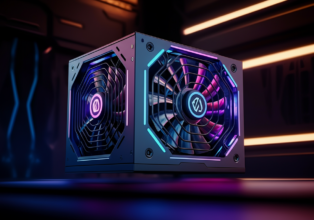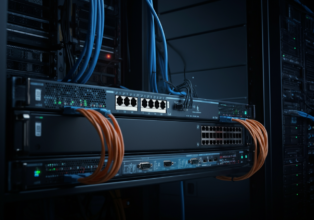Breathing Easy: A Comprehensive Guide to Air Purifiers
We vacuum our floors, scrub our counters, and dust our shelves, but how often do we stop to consider the air we breathe inside our homes? The truth is, indoor air can be 2-5 times more polluted than outdoor air, according to the EPA. That’s where air purifiers come in. These increasingly popular devices promise to cleanse the air we breathe, but with so many options available, choosing the right one can feel overwhelming. This comprehensive guide will equip you with the knowledge to navigate the world of air purifiers and make informed decisions for a healthier home environment.
Why Air Purifiers Matter
We might not see it, but our homes are filled with microscopic particles that can impact our health. Dust mites, pollen, pet dander, mold spores, smoke, volatile organic compounds (VOCs) from cleaning products and furniture, and even bacteria and viruses all contribute to poor indoor air quality.
Here’s how these contaminants can affect you:
- Respiratory Issues: Triggering asthma, allergies, and other respiratory problems.
- Weakened Immune System: Making you more susceptible to colds, flu, and other infections.
- Long-Term Health Concerns: Potentially contributing to heart disease, stroke, and even some cancers.
Air purifiers work by removing these harmful particles from the air, promoting a healthier living environment, particularly for vulnerable individuals like children, the elderly, and those with respiratory conditions.
Decoding the Technology: Types of Air Purifiers
Not all air purifiers are created equal. Understanding the different technologies they employ is crucial for choosing the right one for your needs.
1. HEPA Filters: The Gold Standard
- How they work: High-efficiency particulate air (HEPA) filters are considered the most effective for capturing a wide range of airborne particles. They use a dense network of fibers to trap particles as small as 0.3 microns, including dust mites, pollen, pet dander, and mold spores.
- What to look for: Look for a HEPA filter with a MERV rating (Minimum Efficiency Value Reporting) of 13 or higher for optimal performance.
- Pros: Highly effective against common allergens, relatively quiet operation.
- Cons: Require regular filter replacements, less effective against gases and odors.
- Shop HEPA Filter Air Purifiers
2. Activated Carbon Filters: Targeting Odors and Gases
- How they work: These filters use activated carbon, a highly porous material, to adsorb gases and odors. They are effective in neutralizing smoke, cooking odors, pet smells, and some VOCs.
- What to look for: Choose a purifier with a substantial amount of activated carbon for optimal odor and gas removal.
- Pros: Excellent for odor control, can remove certain harmful gases.
- Cons: Do not remove particulate matter as effectively as HEPA filters, require frequent replacements depending on usage.
- Shop Activated Carbon Air Purifiers
3. UV-C Light Purifiers: Neutralizing Germs
- How they work: These purifiers use ultraviolet (UV-C) light to kill or inactivate bacteria, viruses, and mold spores by disrupting their DNA.
- What to look for: Ensure the UV-C lamp is powerful enough and properly shielded for safe operation.
- Pros: Effective against microorganisms, can help prevent the spread of airborne illnesses.
- Cons: Limited effectiveness against allergens and other particles, potential for ozone generation if not designed properly.
- Shop UV-C Light Air Purifiers
4. Ionic Air Purifiers: Electrostatic Attraction
- How they work: Ionic purifiers release negatively charged ions that attach to airborne particles, making them heavier and causing them to fall to the ground or adhere to surfaces.
- What to look for: Choose a purifier with a built-in collector plate to trap the charged particles and prevent them from re-entering the air.
- Pros: Can be effective in removing some particles, often quieter than other types.
- Cons: Potential to generate ozone, limited effectiveness against larger particles, may not fully eliminate particles from the air.
- Shop Ionic Air Purifiers
5. Ozone Generators: Proceed with Caution
- How they work: These devices intentionally produce ozone, a gas that can neutralize odors and kill microorganisms.
- What to be aware of: Ozone generators can be harmful to human health, even at low levels. The EPA advises against using ozone generators in occupied spaces.
- Pros: Can be effective in eliminating strong odors.
- Cons: Serious health risks associated with ozone exposure, not recommended for residential use.
Choosing the Right Air Purifier: Key Considerations
Navigating the world of air purifiers can be daunting. Here are the essential factors to consider:
- Room Size: Air purifiers are rated for specific room sizes. Ensure the purifier’s CADR (Clean Air Delivery Rate) is appropriate for the area you want to cover. A higher CADR indicates faster air cleaning.
- Target Pollutants: Identify your primary concerns. HEPA filters are best for allergens and particles, while activated carbon targets gases and odors.
- Filter Replacement Costs: Factor in the ongoing cost of filter replacements, as they need to be replaced regularly (every 3-12 months depending on the filter type and usage).
- Noise Level: Consider the noise level, especially if you’re using the purifier in a bedroom or other quiet space.
- Energy Efficiency: Look for energy-efficient models to minimize operating costs.
Beyond Air Purifiers: A Holistic Approach to Clean Air
While air purifiers are valuable tools, they are most effective when part of a comprehensive approach to indoor air quality:
- Source Control: Minimize sources of pollution by ventilating during and after cleaning, choosing low-VOC products, and banning indoor smoking.
- Regular Cleaning: Frequent vacuuming with a HEPA-filter vacuum, dusting, and washing bedding in hot water can significantly reduce allergens.
- Humidity Control: Keep indoor humidity between 40-60% to discourage mold and dust mite growth.
- Plant Power: Some houseplants have air-purifying qualities and can help freshen indoor air naturally.
Breathing Easy: Making Informed Choices for Cleaner Air
With the growing awareness of indoor air pollution, air purifiers have become essential tools for creating healthier homes. By understanding the different technologies, considering your specific needs, and incorporating other healthy home practices, you can breathe easy knowing you’ve taken steps to create a cleaner, healthier environment for yourself and your loved ones.





